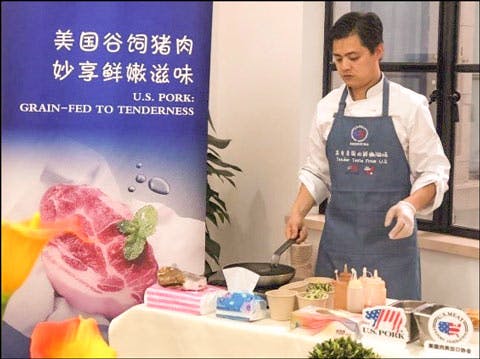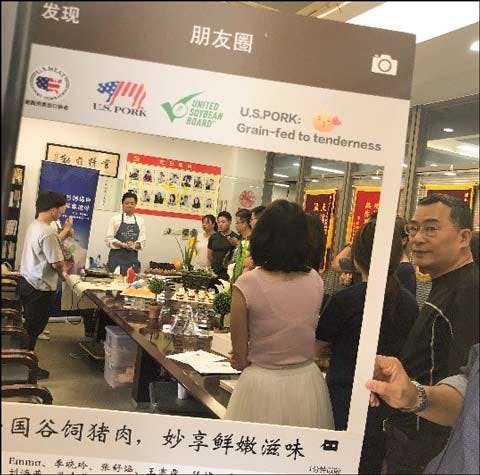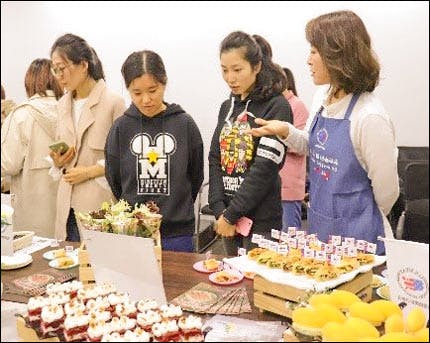Cooking Classes Introduce U.S. Pork to More Chinese Consumers
Educating Chinese consumers about the quality of U.S pork and sharing with them modern cooking styles, USMEF conducted a series of classes in Shanghai aimed at office workers who enjoy preparing food at home. Funded by the United Soybean Board and the National Pork Board, the activity was themed “Grain-fed to Tenderness” and included a chef and a nutritionist each touting U.S. pork’s flavor and versatility.

A series of USMEF cooking classes in Shanghai featured professional instruction on the flavor and versatility of U.S. pork
USMEF is a contractor to the National Pork Board.
The series featured eight separate sessions, with three U.S. pork distributors in China offering customized packages for companies who had workers enrolled in the classes.

Participants in the U.S. pork cooking class in Shanghai were encouraged to use social media to share the things they learned about U.S. pork with family and friends across China

After the lessons on U.S. pork and cooking demonstrations, participants were treated to tasting samples so they could experience the quality and flavor of the product
“We really set out to attract China’s white collar workers, build their trust and expand demand for U.S pork products,” said Ming Liang, USMEF marketing director in China. “The cooking classes were very hands-on and quite effective, as most participants posted photos from the classes on their social media accounts, which will help spread the word to families and friends. This response and influence are what we were counting on when we planned the program.”
Liang noted that pork has long been considered an indispensable component of the Chinese diet, and China is by far the world's largest consumer of pork products.
“These days, China’s consumers are dominated by workers with rising incomes who are paying more and more attention to their options when it comes to high-quality pork,” he said. “Not only are they in a position to decide on specific pork products to feed their families, they are also willing to learn the right way to cook pork and are open to new and creative ideas for pork dishes.”
Each of the classes included an introduction to U.S. pork, lessons on the U.S. product’s positive attributes and a question-and-answer session with a chef and nutritionist. Preparation instructions and cooking demonstrations were then given, followed by tastings of several U.S. pork dishes.
As Liang stated, the sharing of their experiences on social media contributed greatly to the success of the cooking classes.
“In a market the size of China, it takes these types of interactive activities and social media reaction to help create awareness of U.S. pork on a large scale – you educate one group and encourage members of that group to spread the word,” said Liang. “The posts and responses on the U.S. pork cooking classes were very positive and really expanded our reach.”
